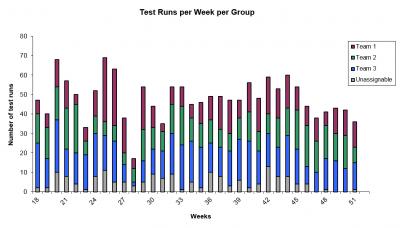The Trouble with Dedicated Resources: Leveling the Workload
Dedication of resources may seem like a good way to have “Subject Matter Experts” (SMEs) get through work quickly, but it gives rise to a costly productivity penalty. The antidote is to level the workload across the team (without compromising the important role of the SME!).
Within all areas of business it is common to find specific activities being assigned to dedicated people. Tasks of all types and frequency can be found with dedicated resources, e.g. daily tasks: ‘We have two people every day testing sterility’, or less frequent tasks: ‘I am in charge of reviewing all the incoming raw material data’.
In some cases the work is assigned to single people, e.g. ‘I do all the incoming raw material sampling and he reviews all the printed materials’, or to small groups of people, e.g. ‘My team does the testing for all the new products with X API’. Or, more generally, dedicating individuals to specific work streams as “Subject Matter Experts” (SMEs) is often used as a strategy to get work done efficiently, especially if tasks are seen as highly specialized.
At BSM, assessments have shown time and time again that work streams in QC and R&D labs, QA groups, and Regulatory Affairs (RA) groups, rarely have a steady enough flow of work to be suitable for the use of dedicated resources. However, despite this day-to-day or weekly workload volatility, for several reasons (such as the “SME argument”), we find dedicated resources, and the ensuing symptoms of backlogs, stress, and a costly productivity penalty.
The graph is an example of product testing workload for three dedicated QC testing groups in an R&D lab. Each group had a fixed resource, and was dedicated to specific products. The aim had been for the products to be divided between groups, so that each group could specialize, and also have about the same workload, to match their resources.
However, what seemed like an even distribution of work over the long term, proved to be very volatile in the shorter interval (daily and weekly). For example, the weekly number of test runs for one group varies between 4 and 33 (excluding weeks with holidays).
Bucketing the workload into specific teams caused the members of each team to have a volatile workload and hence increased stress in the work environment: when one team had very little testing to do (a cause of stress in its own right!), another team was working late evenings and weekends to meet deadlines.
But when the combined workload for the whole lab is considered the variation is significantly less: between 35 and 76. This can be seen visually in the graph above. So clearly the lab would get the benefits of repeatability and predictability that would come with levelling the workload across the groups.
As part of a Lean lab, Lean QA or Lean RA project we help develop tools and put in place mechanisms which allow for the easy redistribution of work among team members. This is not to suggest that there is not a place in organizations for SMEs. It is still possible to level workloads, and respect the need for having specialists deal with certain tasks. In fact, most Real Lean implementations free up the time of specialists to do their specialized work!
The role of SME is very important; however, it’s worth noting that it can become the case that SMEs become experts in a particular test or work stream at the expense of other people being trained in these skills. Leveling the workload also requires (& encourages) more cross training within teams. This in turn can lead to personal development opportunities for people and a great satisfaction in the work place as people become able to work on new things. Another benefit of distribution of work is that it can encourage greater communication between previously isolated people and resources. This leads to greater knowledge sharing and the opportunity for other improvements when tasks are being undertaken by a ‘fresh set of eyes’.
While it feels comfortable to have tasks assigned to specific people or groups there is a significant productivity penalty to the business, coupled with higher stress for the employees. This loss can be recovered by leveling the work load and distributing the work among the team, leading to a more predictable work environment for everyone.
Our consultants can provide further information on the above and discuss any aspect of Real Lean Transformation, simply set-up a call today.

